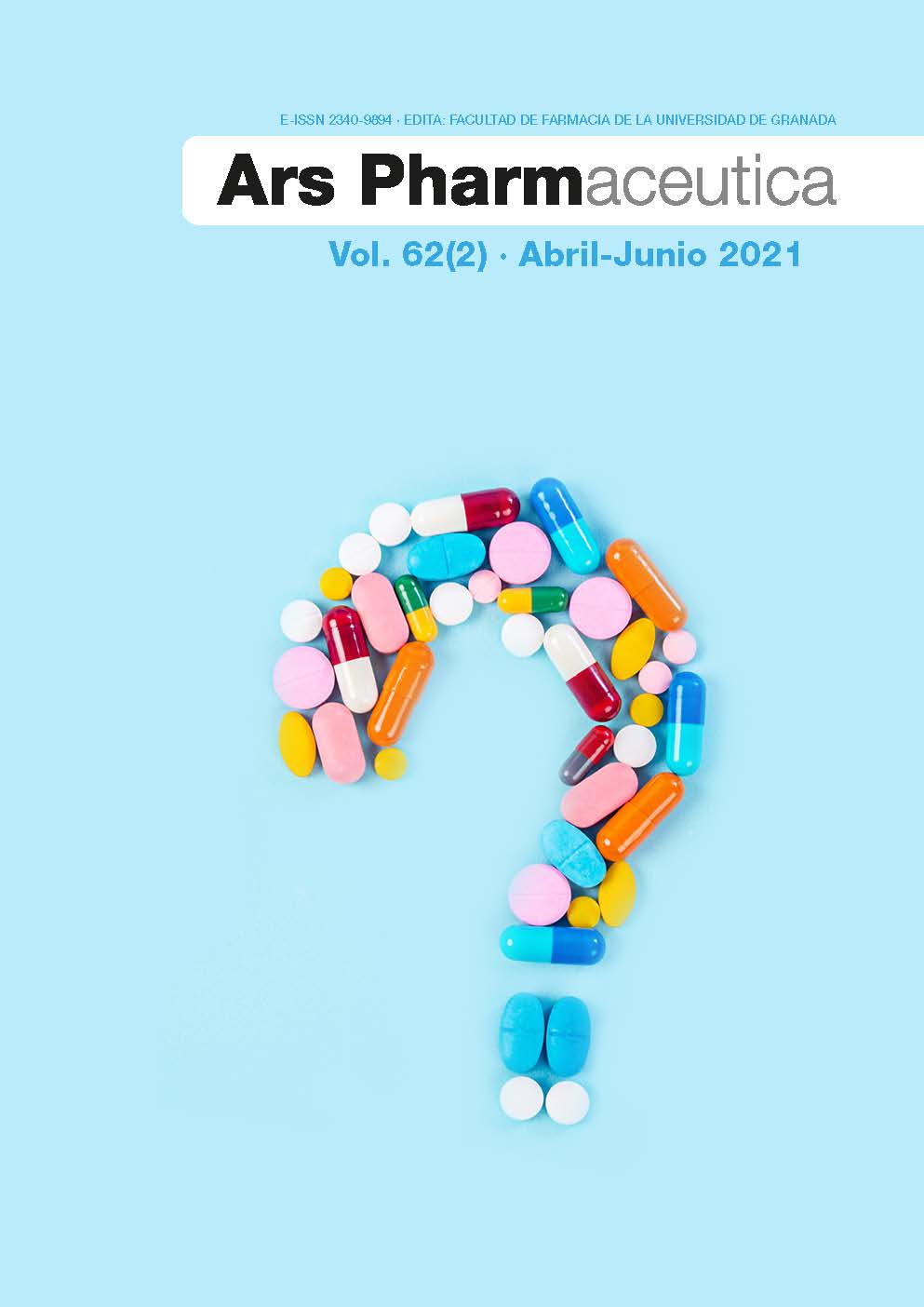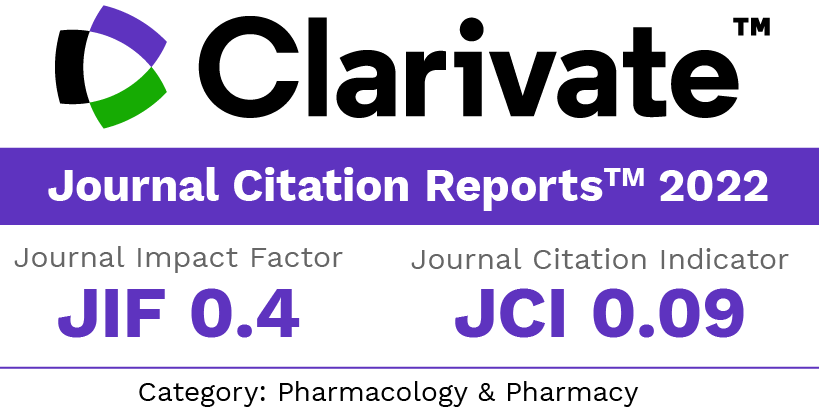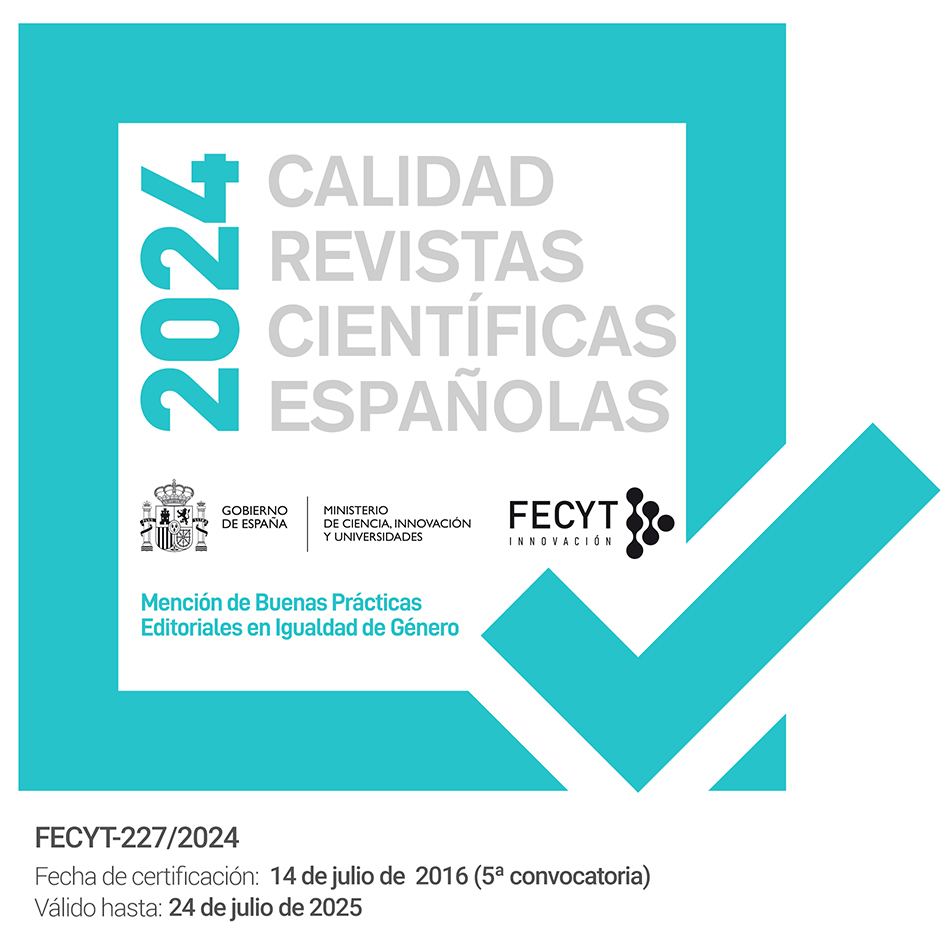Prevalencia de anemia en niños de la población rural del estado norteño de la India
DOI:
https://doi.org/10.30827/ars.v62i2.17762Palabras clave:
anemia, hemoglobina, índice de masa corporal, niñosResumen
Introducción: India soporta la mayor carga de anemia, especialmente en niños y mujeres. Hay menos datos disponibles sobre la prevalencia de anemia en niños en crecimiento de 10 a 14 años. Es importante intervenir temprano y rastrear a este grupo. El objetivo del presente estudio fue estimar la prevalencia de anemia y su correlación con la edad, sexo e índice de masa corporal en niños del área rural de Ghaziabad, Uttar Pradesh, India.
Método: Se incluyó un total de 600 niños de entre 5 y 13 años. Se utilizó un cuestionario detallado para recopilar datos de salud de los niños y el estado socioeconómico de los padres. Se midió peso talla y se calculó el índice de masa corporal. Se midió la hemoglobina mediante analizador calibrado.
Resultados: La prevalencia de anemia según los estándares de la OMS en estos niños fue de 57,67%. Los resultados revelan que la anemia en esta región es más prevalente en las niñas (68%) en comparación con los niños (47,3%). Sin embargo, la asociación entre el índice de masa corporal y la hemoglobina no fue estadísticamente significativa en el presente estudio.
Conclusiones: Nuestros resultados sugieren que el aumento de la prevalencia de anemia en los niños del área rural está asociado con múltiples deficiencias de nutrientes. Las intervenciones nutricionales, la evaluación de los factores de riesgo predisponentes y una mayor cobertura del programa de suplementación son medidas recomendadas que se pueden adoptar para controlar la anemia en los niños.
Descargas
Citas
World Health Organization (WHO). The global prevalence of anemia. Geneva; 2015.
McLean E, Cogswell M, Egli I, Wojdyla D, de Benoist B. Worldwide prevalence of anaemia, WHO Vitamin and Mineral Nutrition Information System, 1993–2005. Public Health Nutr. 2008; 12(04):444-454.
Das DK, Biswas R. Nutritional status of adolescent girls in a rural area of North 24 Parganas district, West Bengal. Indian J Public Health. 2005; 49(1):18-21.
Subramaniam G, Girish M. Iron Deficiency Anemia in Children. Indian J Pediatr. 2015; 82(6):558-564.
Hallberg L, Hulten L, Lindstedt G, Lundberg P, Mark A, Purens J et al. Prevalence of Iron Deficiency in Swedish Adolescents. Pediatr Res. 1993; 34(5):680-687.
Djokic D, Drakulovic MB, Radojicic Z, et al. Risk factors associated with anemia among Serbian school-age children 7-14 years old: results of the first national health survey. Hippokratia. 2010; 14(4):252-260.
Tariku E, Abebe G, Melketsedik Z, Gutema B, Megersa N, Sorrie M et al. Anemia and its associated factors among school-age children living in different climatic zones of Arba Minch Zuria District, Southern Ethiopia. BMC Hematology. 2019;19(1):1-9.
Lozoff B, Beard J, Connor J, Felt B, Georgieff M, Schallert T. Long-Lasting Neural and Behavioral Effects of Iron Deficiency in Infancy. Nutr Rev. 2006; 64(5):34-43.
Institute for Population Sciences (IIPS) and MoHFW. National Family HealthSurvey-4.2017. dispensible en: http://rchiips.org/nfhs/pdf/NFHS4/India.pdf.
WHO. Nutritional Anaemias: Tools for Effective Prevention and Control. Geneva;2015. who.int/iris/bitstream/handle/10665/259425/
Pasricha SR, Armitage AE, Prentice AM, Drakesmith H. Reducing anaemia in low income countries: control of infection is essential. BMJ. 2018; 362: k3165.
Dedefo M, Zelalem D, Eskinder B, Assefa N, Ashenafi W, Baraki N et al. Causes of Death among Children Aged 5 to 14 Years Old from 2008 to 2013 in Kersa Health and Demographic Surveillance System (Kersa HDSS), Ethiopia. Plos One. 2016; 11(6): 1-11.
Manyanga T, El-Sayed H, Doku D, Randall J. The prevalence of underweight, overweight, obesity and associated risk factors among school-going adolescents in seven African countries. BMC Public Health. 2014; 14(1).
Pal A, De S, Sengupta P, Maity P, Dhara PC. An investigation on prevalence of anemia in relation to BMI and nutrient intake among adult rural population of west Bengal, India. Epidemiol Biostat Public Health. 2014; 11(2): 8915(1-10).
Naing L, Winn T, Rusli BN. Practical Issues in Calculating the Sample Size for Prevalence Studies. Medical Statistics. Archives of Orofacial Science. 2006;(1): 9-14.
WHO-TRS 894: Obesity: Preventing and managing the global epidemic; Geneva: WHO 2000.
Behera S, Bulliyya G. Magnitude of Anemia and Hematological Predictors among Children under 12 Years in Odisha, India. Hindawi Publishing Corporation Anemia. 2016;(4):1-10.
Shristi Nadar, Vijaykumar M, Gheena R. Prevalence of anemia in urban children attending a pediatric hospital of a metro city in South India. Res J Pharm Technol. 2016; 9(10):1571-1574.
Sundaresan S, William W, Prema A, Sudhagandhi B. Prevalence of anemia in the school children of Kattankulathur, Tamil Nadu, India. Int j Nutr Pharmacol Neurol Dis. 2011; 1(2):184-188.
Rani J, Bandrapalli E, Study of Prevalence of Anaemia in School Children and Factors Associated with It. Int J Contemp Med Res. 2017;4(9):1902-1905.
Aishwarya D, Saranya S. Body mass index based anemic status among children who are attending the pediatric ward of southern part of Chennai - A prospective study. Int Arch Integr Med. 2017; 4(11):202-206.
Ramachandran P, Kalaivani K. Prevalence of Anemia in India and Strategies for Achieving Sustainable Devepolment Goal (SDG) Target. Proc Indian Natn Sci Acad. 2018; 84(4):899-912.
Bharati S, Pal M, Bharati P. Prevalence of anaemia among 6- to 59-month-old children in India : the latest picture through the NFHS-4. J Biosoc Sci. 2019; 52(1):97-107.
Nguyen P, Scott S, Avula R, Tran L, Menon P. Trends and drivers of change in the prevalence of anaemia among 1 million women and children in India, 2006 to 2016. BMJ Global Health. 2018;(5): 1-12.
Ministry of Health and Family Welfare Anemia Mukt Bharat: Intensified National Iron Plus Initiative; 2018. https://anemiamuktbharat.info/dashboard. Accessed 1 Jan 2019.
Kapil U, Kapil R, Gupta A. Prevention and Control of Anemia amongst Children and Adolescents: Theory and Practice in India. Indian J Pediatr. 2019; 86(6):523-531.
Descargas
Publicado
Cómo citar
Número
Sección
Licencia
Derechos de autor 2021 Ars Pharmaceutica (Internet)

Esta obra está bajo una licencia internacional Creative Commons Atribución-NoComercial-CompartirIgual 4.0.
Los artículos que se publican en esta revista están sujetos a los siguientes términos en relación a los derechos patrimoniales o de explotación:
- Los autores/as conservarán sus derechos de autor y garantizarán a la revista el derecho de primera publicación de su obra, la cual se distribuirá con una licencia Creative Commons BY-NC-SA 4.0 que permite a terceros reutilizar la obra siempre que se indique su autor, se cite la fuente original y no se haga un uso comercial de la misma.
- Los autores/as podrán adoptar otros acuerdos de licencia no exclusiva de distribución de la versión de la obra publicada (p. ej.: depositarla en un archivo telemático institucional o publicarla en un volumen monográfico) siempre que se indique la fuente original de su publicación.
- Se permite y recomienda a los autores/as difundir su obra a través de Internet (p. ej.: en repositorios institucionales o en su página web) antes y durante el proceso de envío, lo cual puede producir intercambios interesantes y aumentar las citas de la obra publicada. (Véase El efecto del acceso abierto).
























